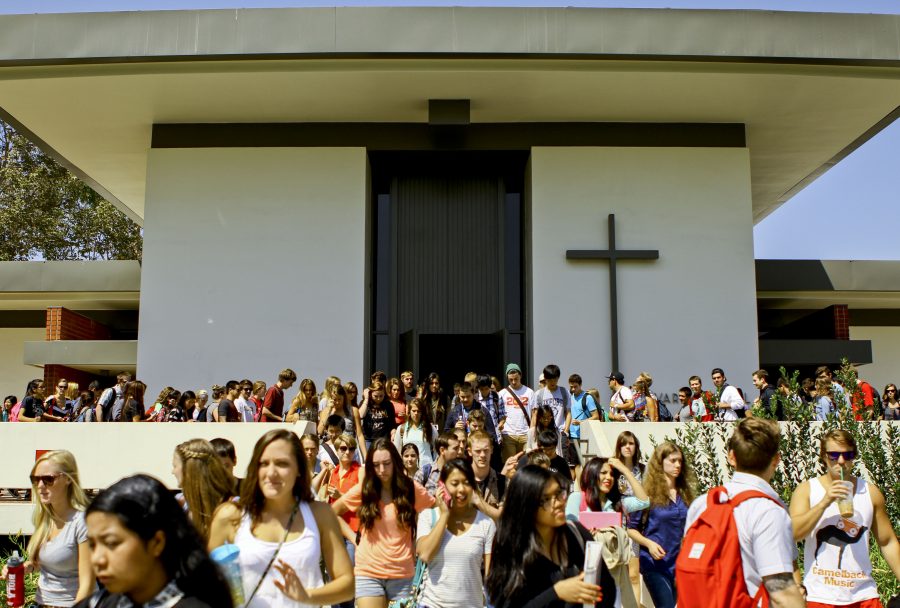Halloween terror is a well-known theme during this time of year. For those willing to corrupt a childhood image of happiness, theme parks around the nation such as Disney World, Disneyland, Knott’s Scary Farm, Dark Harbor and countless others fit the bill.
Scaring down to a science
Walking around Knott’s during the lovely daylight hours, guests would not imagine the horrors awaiting in the night. Ghosts and werewolves and killer clowns stalk the park, chasing innocent visitors and even facing physical backlash from guests.
Horror theme parks have scaring down to a science. A well-placed chuckle and some sparking knee-pads have guests running, but not away from the premises. Year after year, the crowds flock toward the parks to be terrified around the fall season.
Dean of Talbot school of Theology Clint Arnold recalls his days working as a character at Knott’s Scary Farm. He mentioned his designated place in the Timber Mountain Log Ride, planted behind the boat as they came in through the river. He would carry a feather to get guests attention then proceed to scare them with his werewolf — or “scarewolf,” as he explained — costume.
Biola graduate Scott Derrickson has experienced fame and success telling visual stories of real life horrors — demon possessions and exorcisms, displayed in films like the “Exorcism of Emily Rose.” On the note of the science behind scaring people, senior film production major Connor Thomas has given hours of thought to developing how best to scare viewers of a student film he is in the process of creating.
“The science of scaring has kind of melted down into how long can you look at a dark hallway before you have to turn your eyes away because you know something’s coming, or it’s turned into how many times can we make you jump in your seat because a loud noise has happened. Ideally and artistically, you like the first one because it creates a sense of mystery and fear of the unknown rather than a physical reaction to what is happening to you,” Thomas said.
separating oneself from the fear
Similarly, Thomas’ partner in the horror film project and senior film media management major Sarah Hadden agrees with the concept of artistic fear. Growing up in the midwest, hometown in Ohio hosted a scary version of a local amusement park called Cedar Point, though she mentions a bit of a letdown from Knott’s Scary Farm because of it.
“I grew up actually being scared, like they’ll follow you around the park and follow you to your car. So it’s kind of weird, you don’t realize who’s a [Cedar Point] worker there and who’s not,” Hadden said. “When I went to Knott’s Scary, I was a freshman here and I was kind of expecting that and then when I got there they just stayed in their corners and you could tell who you could avoid if you didn’t want to be scared.”
Thomas mentions the importance of separating oneself from the fear. Theme parks may seem all-encompassing and scary, but the truth behind and outside them must be maintained in the mind of the Christian visitor.
“Biblically it’s interesting for us to look at horror. I grew up in a household that wouldn’t let it anywhere near the house,” Thomas said. “God’s not a god of fear. And that’s why people have to know where their boundaries are… It becomes: what is filling your mind? Is it the idea of ‘that thing is creepy and scary’ or do all thoughts go out the window and it’s just the jump?”







